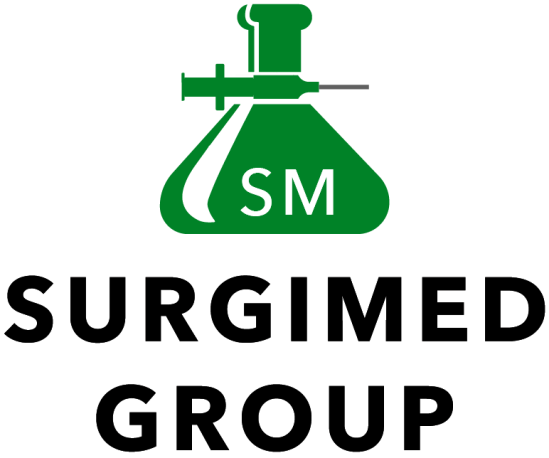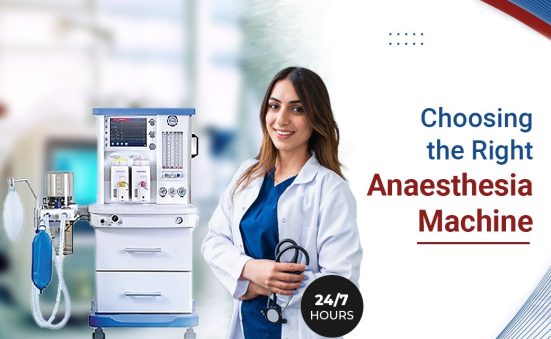In the intricate world of medical practices, the selection of an anaesthesia machine is a decision of paramount significance. A comprehensive understanding of the considerations involved is essential to ensure the seamless administration of anaesthesia and, consequently, the well-being of patients. This detailed exploration will guide medical professionals through the myriad of considerations, offering insights into the critical elements that define the right anaesthesia machine for diverse medical settings.
I. Introduction
A. Significance of Anaesthesia Machines
Anaesthesia machines are the backbone of perioperative care, facilitating the safe and precise delivery of anaesthetic agents. The evolution of these machines has been remarkable, aligning with advancements in medical technology and patient safety standards.
B. Purpose of the Guide
This guide aims to provide medical practitioners, anaesthetists, and healthcare administrators with a comprehensive resource for navigating the complexities of anaesthesia machine selection. From technological nuances to patient-specific considerations, each facet will be meticulously examined.
II. Anaesthesia Machine Fundamentals
A. Basic Components
Understanding the fundamental components of an anaesthesia machine is crucial. This section will delve into the anatomy of these machines, detailing key elements such as the vaporizer, breathing system, and gas delivery system.
B. Classification of Anaesthesia Machines
Anaesthesia machines come in various types, each tailored to specific clinical needs. Differentiating between continuous-flow machines, draw-over systems, and others is vital for making an informed decision.
III. Patient Safety and Regulatory Compliance
A. Safety Standards and Certifications
Ensuring patient safety is non-negotiable. This segment will unravel the various safety standards and certifications that anaesthesia machines must adhere to. The role of regulatory bodies in overseeing these standards will also be explored.
B. Built-In Safety Features
Modern anaesthesia machines boast an array of safety features. From pressure-relief mechanisms to gas concentration monitors, understanding these features is paramount for a secure clinical environment.
IV. Technological Advancements
A. Integration of Monitoring Systems
The integration of monitoring systems into anaesthesia machines has revolutionized patient care. This part will scrutinize how advanced monitoring, including capnography and pulse oximetry, enhances the precision of anaesthesia delivery.
B. Electronic Medical Record (EMR) Compatibility
The transition to electronic medical records is reshaping healthcare. Examining the compatibility of anaesthesia machines with EMR systems is crucial for seamless data management and documentation.
V. Considerations for Different Medical Specialties
A. Anaesthesia in Pediatrics
Paediatric anaesthesia demands unique considerations. This section will outline the specific requirements for anaesthesia machines catering to pediatric patients, including low-flow systems and scavenging setups.
B. Anaesthesia in Obstetrics
Expectant mothers require specialized anaesthesia care. Exploring the requisites for anaesthesia machines in obstetric settings, such as the incorporation of fetal monitoring capabilities, is essential.
VI. Financial Considerations
A. Budget Allocation
Balancing the budget while ensuring optimal functionality is a common challenge. This segment will guide practitioners on allocating budgets effectively, considering both upfront costs and long-term operational expenses.
B. Return on Investment (ROI)
Assessing the ROI of anaesthesia machines involves evaluating factors beyond financial metrics. This section will explore how the right machine contributes to improved patient outcomes, staff efficiency, and overall practice success.
VII. Maintenance and Servicing
A. Preventive Maintenance
Anaesthesia machines require rigorous preventive maintenance. This part will elucidate the importance of regular checks, calibration, and servicing to guarantee the longevity and reliability of the equipment.
B. Availability of Spare Parts
The accessibility of spare parts is a critical consideration in the event of equipment malfunction. Understanding the supply chain for spare parts ensures prompt resolution of technical issues.
VIII. Training and User Familiarity
A. User Training Programs
The proficiency of healthcare professionals in operating anaesthesia machines directly influences patient safety. Establishing robust training programs and ensuring continuous education is explored in this section.
B. User-Friendly Interfaces
Examining the user interface of anaesthesia machines contributes to user satisfaction and operational efficiency. This segment will elaborate on the importance of intuitive interfaces in clinical settings.
IX. Future-Readiness
A. Technological Upgradability
Anticipating future technological advancements is essential. This part will guide medical practitioners in selecting anaesthesia machines that can be easily upgraded to incorporate emerging technologies.
B. Adapting to Changing Clinical Needs
Flexibility is key in healthcare. Understanding how anaesthesia machines can adapt to evolving clinical requirements ensures that the chosen equipment aligns with the growth and diversification of medical practices.
X. Elektro Genesis: A Vision for Anaesthesia Excellence
A. Technological Prowess
Elektro Genesis stands at the forefront of technological innovation in medical equipment. This section will spotlight the technological prowess embedded in Elektro Genesis’s anaesthesia machines, emphasizing features that elevate clinical outcomes.
B. Research Collaborations
Elektro Genesis’s commitment to advancing medical technology is exemplified through research collaborations. This part will showcase how these collaborations contribute to the continuous enhancement of anaesthesia machines.
XI. Conclusion
A. Recapitulation of Key Considerations
Summarizing the crucial considerations discussed in this comprehensive guide, this section aims to provide a quick reference for medical practitioners embarking on the journey of anaesthesia machine selection.
B. Empowering Medical Practices
Ultimately, the right anaesthesia machine empowers medical practices to deliver superior perioperative care. By amalgamating technological acumen, patient safety measures, and a forward-looking approach, Elektro Genesis emerges as a pivotal player in shaping the future of anaesthesia administration.
In navigating the spectrum of considerations for selecting the right anaesthesia machine, practitioners embark on a journey towards not only ensuring clinical excellence but also contributing to the broader narrative of elevating healthcare standards. Elektro Genesis, with its commitment to innovation, safety, and user-centric design, stands as a reliable partner for medical practices seeking excellence in anaesthesia administration.

